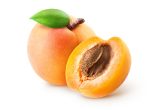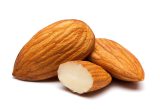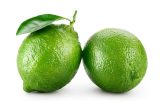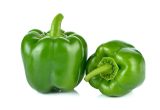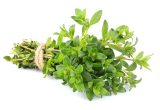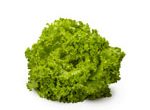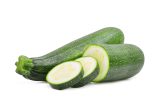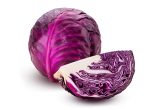Blackcurrent

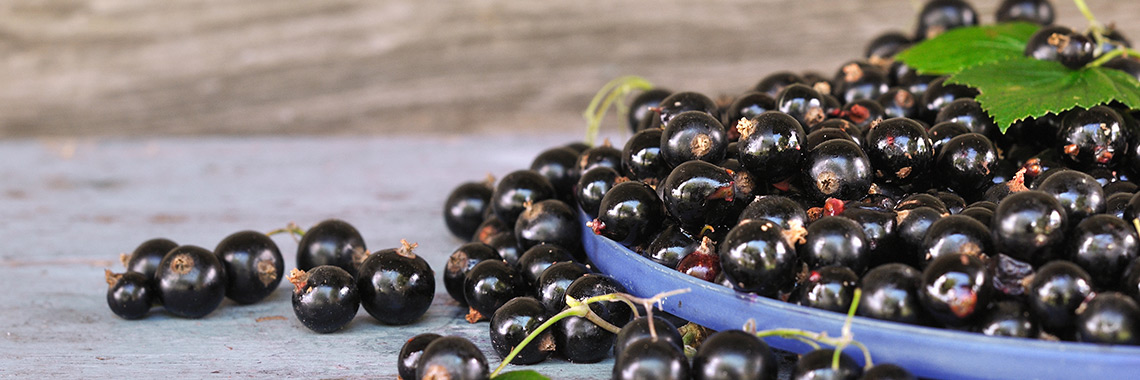
Description
- Blackcurrant (Ribes nigrum L.) belongs to the Grossulariaceae family.
- It is a shrub commonly grown in different temperate climate regions of the world (Bonarska-Kujawa, 2014), including Europe and New Zealand (Huo, 2013). Blackcurrant is believed to be a native plant of Europe and Northern Asia (Gopalan, 2012).
PHYSICAL AND ORGANOLEPTIC CHARACTERISTICS
- The fruit is a small black purplish berry with a characteristic aroma, very high in polyphenols.
- It is the anthocyanins, from the flavonoid family, that provide the characteristic purple colour (Chen, 2014).
- Blackcurrants have a characteristic bitter and astringent flavor (Cortez, 2019). This is due to the presence of tannins (Soares, 2018).
- Taste intensity is determined by the average degree of polymerisation of tannin compounds, also called proanthocyanidins (Cortez, 2019).
- Analysis of the volatile compound profiles of six blackcurrant cultivars grown in China showed the presence of 166 free volatiles and 111 bound volatiles, the main ones being esters and terpenoids. Floral, fruity and sweet flavours appeared to be the characteristic aroma of these cultivars, mainly resulting from the presence of 17 volatiles (Liu Y, 2018).
- Acetate and 3-mercapto-1-hexanol are important in blackcurrant aroma (Zhu, 2016).
COMPOSITION CHARACTERISTICS (excluding macronutrients, vitamins and minerals)
- Polyphenol composition of blackcurrant:
- Blackcurrant is high in polyphenols and particularly anthocyanins (Huo, 2013). The dominant anthocyanins are delphinidin-3-O-rutinoside and cyanidin-3-O-rutinoside (Rohrig, 2019). However, the amount of these molecules varies depending on the species and the region in which the blackcurrant evolved (Vagiri, 2013).
- Based on the observation that anthocyanins can inhibit postprandial blood sugar, English researchers wanted to determine the dose-dependent effects of blackcurrant extract on postprandial blood sugar. Consumption of approximately 100 g of blackcurrant reduced postprandial blood sugar, insulin levels, and incretin secretion, suggesting that blackcurrant consumption may provide cardiometabolic benefits (Castro-Acosta, 2016).
- In addition to anthocyanins, seven flavonols, a subgroup of flavonoids, were identified and quantified in blackcurrant: myricetin-3-O-rutinoside (145.5 mg), myricetin-3-O-hexoside (79.7 mg), myricetin-3-O-(6″-malonyl)-glucoside (17.4 mg), kaempferol-3-O-glucoside (20.5 mg), quercetin-3-O-rutinoside (55.1 mg), quercetin-3-O-hexoside (25.8 mg) and myricetin (129.1 mg) (Mbeunkui, 2012).
- Blackcurrants are high in ascorbic acid (50-280 mg/100 g), which, together with a high flavonoid content, enhances the antioxidant capacity of the berries and increases their health benefits (Castro-Acosta, 2016; Woznicki, 2017).
RAW
The following values are approximate and depend on variety, season, ripeness, cultivation conditions, etc.
The average energy content of blackcurrants is 71.30 calories (kcal) per 100 g, i.e. 300 kJ. For a small punnet of blackcurrants (125 g), this fruit provides 89.12 kcal.
COMPOSITION TABLES
For each nutrient, the tables provide information on the content, minimum and maximum values, as well as the percentage of the Dietary Reference Value (DRVs) for 100 g net of blackcurrant.
MACRONUTRIENTS
| Constituent (g) | Average content |
Min-Max per 100g |
DRV% |
|---|---|---|---|
| Water | 80,50 | 75,70 - 84,10 | - |
| Fibers | 5,80 | 4,20 - 7,80 | - |
| Carbohydrates | 9,68 | NC - 11,70 | 3,72 |
| Sugars | 9,68 | - | 10,76 |
| Lipids | 0,86 | 0,41 - 2 | 1,23 |
| Saturated fat | 0,14 | 0,034 - 0,25 | 0,70 |
| Protein | 1,33 | 0,10 - 1,88 | 2,66 |
| Constituent (g) | Amount | Min-Max | DRV% |
|---|---|---|---|
| Water | Ciqual 2020 | - | - |
| Fibers | Ciqual 2020 | - | - |
| Carbohydrates | Ciqual 2020 | - | Règlement (UE) N°1169/2011 du parlement Européen et du conseil du 25 octobre 2011 |
| Sugars | Ciqual 2020 | - | Règlement (UE) N°1169/2011 du parlement Européen et du conseil du 25 octobre 2011 |
| Lipids | Ciqual 2020 | - | Règlement (UE) N°1169/2011 du parlement Européen et du conseil du 25 octobre 2011 |
| Saturated fat | Ciqual 2020 | - | Règlement (UE) N°1169/2011 du parlement Européen et du conseil du 25 octobre 2011 |
| Protein | Ciqual 2020 | - | Règlement (UE) N°1169/2011 du parlement Européen et du conseil du 25 octobre 2011 |
Zoom on carbohydrates
- Blackcurrants contain a quantity of carbohydrates (9.68 g per 100 g) which is below the average content found in fresh fruit: approximately 11.31 g per 100 g.
Zoom on fibres
- Blackcurrants are a source of fibre*, as they provide 5.80 g per 100 g, i.e. more than 3 g per 100 g of fruit.
- This amount is higher than the average content in fresh fruit (2.77 g per 100 g).
- Moreover, according to the data of the Ciqual 2020 table, blackcurrants are, after passion fruit, the fruit that contains the most fibre.
Zoom on proteins
- The protein content of blackcurrants (1.33 g per 100 g) is higher than the average content in fresh fruit: 0.93 g per 100 g.
Zoom on lipids
- The fat content of blackcurrants (0.86 g per 100 g) is higher than the average content in fresh fruit: 0.56 g per 100 g.
- Blackcurrants have a low fat content* as they contain less than 3 g per 100 g.
*Regulation (EC) No 1924/2006 of the European Parliament and of the Council of 20 December 2006 on nutrition and health claims made on foods.
MINERALS AND TRACE ELEMENTS
| Constituent | Average content |
Min-Max per 100g |
DRV% |
|---|---|---|---|
| Calcium (mg) | 57,10 | 43,60 - 80 | 7,14 |
| Chloride (mg) | - | - | - |
| Copper (mg) | 0,093 | 0,077 - 0,12 | 9,30 |
| Iron (mg) | 1,17 | 0,51 - 1,54 | 8,36 |
| Iodine (µg) | 1,50 | 0,85 - 2,30 | 1 |
| Magnesium (mg) | 23 | 19,40 - 24 | 6,13 |
| Manganese (mg) | 0,28 | 0,047 - 0,50 | 14 |
| Phosphorus (mg) | 53,50 | 31,70 - 66,90 | 7,64 |
| Potassium (mg) | 330 | 244 - 423 | 16,50 |
| Selenium (µg) | 1,10 | NC - 2,40 | 2 |
| Sodium (mg) | 2,50 | 2 - 4,10 | - |
| Zinc (mg) | 0,28 | 0,25 - 0,33 | 2,80 |
| Constituent | Amount | Min-Max | DRV% |
|---|---|---|---|
| Calcium (mg) | Ciqual 2020 | - | Règlement (UE) N°1169/2011 du parlement Européen et du conseil du 25 octobre 2011 |
| Chloride (mg) | Ciqual 2020 | - | Règlement (UE) N°1169/2011 du parlement Européen et du conseil du 25 octobre 2011 |
| Copper (mg) | Ciqual 2020 | - | Règlement (UE) N°1169/2011 du parlement Européen et du conseil du 25 octobre 2011 |
| Iron (mg) | Ciqual 2020 | - | Règlement (UE) N°1169/2011 du parlement Européen et du conseil du 25 octobre 2011 |
| Iodine (µg) | Ciqual 2020 | - | Règlement (UE) N°1169/2011 du parlement Européen et du conseil du 25 octobre 2011 |
| Magnesium (mg) | Ciqual 2020 | - | Règlement (UE) N°1169/2011 du parlement Européen et du conseil du 25 octobre 2011 |
| Manganese (mg) | Ciqual 2020 | - | Règlement (UE) N°1169/2011 du parlement Européen et du conseil du 25 octobre 2011 |
| Phosphorus (mg) | Ciqual 2020 | - | Règlement (UE) N°1169/2011 du parlement Européen et du conseil du 25 octobre 2011 |
| Potassium (mg) | Ciqual 2020 | - | Règlement (UE) N°1169/2011 du parlement Européen et du conseil du 25 octobre 2011 |
| Selenium (µg) | Ciqual 2020 | - | Règlement (UE) N°1169/2011 du parlement Européen et du conseil du 25 octobre 2011 |
| Sodium (mg) | Ciqual 2020 | - | - |
| Zinc (mg) | Ciqual 2020 | - | Règlement (UE) N°1169/2011 du parlement Européen et du conseil du 25 octobre 2011 |
Zoom on minerals and trace elements
- Blackcurrants are a source of potassium, as they provide the equivalent of 16.50% of DRVs, i.e. 330 mg per 100 g. They are, after melon, the fruit that contains the most potassium (Ciqual 2020 table).
- Blackcurrants also have notable manganese and copper contents. They provide the equivalent of:
- 14% of DRVs for manganese, i.e. 0.28 mg per 100 g;
- 9.30% of DRVs for copper, i.e. 0.093 mg per 100 g.
- Moreover, according to the data of the Ciqual 2020 table, blackcurrants are:
- after blackberries, the fruit that contains the most iron with a content equivalent to 8.36% of DRVs, i.e. 1.17 mg per 100 g;
- the fruit that contains the most phosphorus with a content equivalent to 7.64% of DRVs, i.e. 53.50 mg per 100 g.
- The other minerals and trace elements are present in quantities representing less than 8% of DRVs.
VITAMINS
| Constituent | Average content |
Min-Max per 100g |
DRV% |
|---|---|---|---|
| Provitamin A Beta-carotene (µg) | 100 | - | - |
| Vitamin A equivalent (µg) | 16,67 | - | 2,08 |
| Vitamin B1 (mg) | 0,038 | 0,02 - 0,05 | 3,45 |
| Vitamin B2 (mg) | 0,038 | 0,024 - 0,05 | 2,71 |
| Vitamin B3 (mg) | 0,30 | 0,23 - 0,32 | 1,88 |
| Vitamin B5 (mg) | 0,40 | - | 6,67 |
| Vitamin B6 (mg) | 0,073 | 0,06 - 0,10 | 5,21 |
| Vitamin B9 (µg) | 8,20 | - | 4,10 |
| Vitamin C (mg) | 181 | 113 - 255 | 226,25 |
| Vitamin E (mg) | 2,10 | 2 - 2,17 | 17,50 |
| Vitamin K1 (µg) | - | - | - |
| Constituent | Amount | Min-Max | DRV% |
|---|---|---|---|
| Provitamin A Beta-carotene (µg) | Ciqual 2020 | - | - |
| Vitamin A equivalent (µg) | Calcul à partir de la valeur Provitamine A Béta-carotène* | - | Règlement (UE) N°1169/2011 du parlement Européen et du conseil du 25 octobre 2011 |
| Vitamin B1 (mg) | Ciqual 2020 | - | Règlement (UE) N°1169/2011 du parlement Européen et du conseil du 25 octobre 2011 |
| Vitamin B2 (mg) | Ciqual 2020 | - | Règlement (UE) N°1169/2011 du parlement Européen et du conseil du 25 octobre 2011 |
| Vitamin B3 (mg) | Ciqual 2020 | - | Règlement (UE) N°1169/2011 du parlement Européen et du conseil du 25 octobre 2011 |
| Vitamin B5 (mg) | Ciqual 2020 | - | Règlement (UE) N°1169/2011 du parlement Européen et du conseil du 25 octobre 2011 |
| Vitamin B6 (mg) | Ciqual 2020 | - | Règlement (UE) N°1169/2011 du parlement Européen et du conseil du 25 octobre 2011 |
| Vitamin B9 (µg) | Ciqual 2020 | - | Règlement (UE) N°1169/2011 du parlement Européen et du conseil du 25 octobre 2011 |
| Vitamin C (mg) | Ciqual 2020 | - | Règlement (UE) N°1169/2011 du parlement Européen et du conseil du 25 octobre 2011 |
| Vitamin E (mg) | Ciqual 2020 | - | Règlement (UE) N°1169/2011 du parlement Européen et du conseil du 25 octobre 2011 |
| Vitamin K1 (µg) | Ciqual 2020 | - | Règlement (UE) N°1169/2011 du parlement Européen et du conseil du 25 octobre 2011 |
Zoom on vitamins
- Blackcurrants are high in vitamin C, as they provide the equivalent of 226.25% of DRVs, i.e. 181 mg per 100 g. According to the Ciqual 2020 table, blackcurrants are, after guava, the fruit that contains the most vitamin C.
- They are also a source of vitamin E, as they provide the equivalent of 17.50% of DRVs, i.e. 2.10 mg per 100 g. Blackcurrants are the fruit that contain the most vitamin E (Ciqual 2020 table).
- The other vitamins are present in quantities representing less than 7% of DRVs.
*Calculation made: Beta-Carotene / 6 + retinol
POLYPHENOLS
| Constituent (mg) | Average content |
Min-Max per 100mg |
|---|---|---|
| Flavonoids (mg) | 607,07 | 378,64 - 865,36 |
| of which Flavonols (mg) | 13,68 | 13,68 - 13,68 |
| of which Flavanols (mg) | 1,17 | 1,17 - 1,17 |
| of which Anthocyanins (mg) | 592,22 | 363,79 - 850,51 |
| Phenolic Acids (mg) | 14,79 | 11,30 - 19,28 |
| of which Hydroxybenzoic acids (mg) | 1,50 | 0,80 - 2,60 |
| of which Hydroxycinnamic acids (mg) | 13,29 | 10,50 - 16,68 |
| Total polyphenols | 621,86 | 389,94 - 884,64 |
| Constituent (mg) | Amount | Min-Max |
|---|---|---|
| Flavonoids | Phénol-Explorer version 3.6 Méthode utilisée : Chromatographie | - |
| of which Flavonols | Phénol-Explorer version 3.6 Méthode utilisée : Chromatographie | - |
| of which Flavanols | Phénol-Explorer version 3.6 Méthode utilisée : Chromatographie | - |
| of which Anthocyanins | Phénol-Explorer version 3.6 Méthode utilisée : Chromatographie | - |
| Phenolic Acids | Phénol-Explorer version 3.6 Méthode utilisée : Chromatographie | - |
| of which Hydroxybenzoic acids | Phénol-Explorer version 3.6 Méthode utilisée : Chromatographie | - |
| of which Hydroxycinnamic acids | Phénol-Explorer version 3.6 Méthode utilisée : Chromatographie | - |
| Total polyphenols | Phénol-Explorer version 3.6 Méthode utilisée : Chromatographie | - |
Zoom on polyphenols
- Polyphenols are substances with an antioxidant effect.
- Blackcurrants contain a significant amount of polyphenols. They are made up of 97% anthocyanins, from the flavonoid family.
Nutrition and health claims
According to the definitions of nutrition claims as presented in Regulation (EC) No 1924/2006 on nutrition and health claims, and in view of the composition of blackcurrants, the following claims may be used:
NUTRITION CLAIMS OF BLACKCURRANT
- Low in fat (100 g of blackcurrants contain less than 3 g of fat)
- High in vitamin C (100 g of blackcurrant provide the equivalent of more than 30% of DRVs).
- Source of fibre (100 g of blackcurrant contain more than 3 g of fibre)
- Source of vitamin E (100 g of blackcurrant provide the equivalent of more than 15% of DRVs).
- Source of potassium (100 g of blackcurrant provide the equivalent of more than 15% of DRVs).
HEALTH CLAIMS (for a consumption of 100 g of blackcurrant)
Vitamin C
- Vitamin C contributes to:
- normal function of the immune system during and after intense physical exercise,
- normal collagen formation for the normal function of blood vessels,
- normal collagen formation for the normal function of bones,
- normal collagen formation for the normal function of cartilage,
- normal collagen formation for the normal function of gums,
- normal collagen formation for the normal function of skin,
- normal collagen formation for the normal function of teeth,
- normal energy-yielding metabolism,
- normal function of the nervous system,
- normal psychological function,
- normal function of the immune system,
- protection of cells from oxidative stress,
- reduction of tiredness and fatigue,
- regeneration of the reduced form of vitamin E.
- Vitamin C increases iron absorption.
Vitamin E
- Vitamin E contributes to the protection of cells from oxidative stress.
Potassium
- Potassium contributes to:
- normal functioning of the nervous system,
- normal muscle function,
- maintenance of normal blood pressure.
References
- Agence nationale de sécurité sanitaire de l’alimentation, de l’environnement et du travail. Table de composition nutritionnelle des aliments Ciqual 2020. Consultée le 27/07/2020 depuis le site internet Ciqual https://ciqual.anses.fr/
- Agence nationale de sécurité sanitaire de l’alimentation, de l’environnement et du travail. Table de composition nutritionnelle des aliments Ciqual pour le calcul des apports nutritionnels CALNUT 2020. Consultée le 15/09/2020 depuis le site internet Ciqual https://ciqual.anses.fr/
- Bonarska-Kujawa D, Cyboran S, Zylka R, Oszmianski J, Kleszczynska H. Biological activity of blackcurrant extracts (Ribes nirgum L.) in relation to eruthricyte membranes. Biomed Res Int. 2014;2014:783059.
- Castro-Acosta ML, Smith L, Miller RJ, McCarthy DI, Farrimond JA, Hall WL. Drinks containing anthocyanin-rich blackcurrant extract decrease postprandial blood glucose, insulin and incretin concentrations. The Journal of Nutritional Biochemistry. 2016;38:154-61.
- Chen L, Xin X, Yuan Q, Su D, Liu W. Phytochemical properties and antioxidant capacities of various colored berries. J Sci Food Agric. 2014;94(2):180-8.
- Cortez RE, Gonzalez de Mjia E. Blackcurrants (Ribes nigrum): A Review on Chemistry, Processing, and Health Benefits. Journal of Food Science. 2019;84(9):1750-3841.
- Gopalan A, Reuben SC, Ahmed S, Darvesh AS, Hohmann J, Bishayee A. The health benefits of blackcurrants. Food Funct. 2012;3(8):795-809.
- Huo J, Yang G, Zhang Y, Li F. A new stategy for identification of currant (Ribes nigrum L.) cultivars using RAPD markers. Genet Mol Res. 2013;12(2):2056-67.
- Liu Y, Wang S, Ren J, Yuan G, Li Y, Zhang B, Zhu B. Characterization of free and bound volatile compounds in Six ribes nigrum L. blackcurrant cultivars. Food Res. Int. 2018;103:201-315.
- Mbeunkui F, Grace MH, Yousef GG, Lila MA. Isolation and characterization of flavonols from blackcurrant by high-performance counter-current chromatography and electrospray ionization tandem mass spectrometry. J Sep Sci. 2012;35(13):1682-9.
- Neveu V, Perez-Jiménez J, Vos F, Crespy V, du Chaffaut L, Mennen L, Knox C, Eisner R, Cruz J, Wishart D, Scalbert A. (2010) Phenol-Explorer: an online comprehensive database on polyphenol contents in foods. Database, doi: 10.1093/database/bap024. Full text (free access)
- Règlement (CE) N° 1924/2006 du Parlement européen et du Conseil du 20 décembre 2006 concernant les allégations nutritionnelles et de santé portant sur les denrées alimentaires.
- Règlement (UE) N°432/2012 de la Commission du 16 mai 2012 établissant une liste des allégations de santé autorisées portant sur les denrées alimentaires, autres que celles faisant référence à la réduction du risque de maladie ainsi qu’au développement et à la santé infantiles.
- Règlement (UE) n°1169/2011 du Parlement européen et du Conseil du 25 octobre 2011 concernant l’information des consommateurs sur les denrées alimentaires, modifiant les règlements (CE) n°1924/2006 et (CE) n°1925/2006 du Parlement européen et de Conseil et abrogeant la directive 87/250/CEE de la Commission, la directive 90/496/CEE du Conseil, la directive 1999/10/CE de la Commission, la directive 200/13/CE du Parlement européen et du Conseil, les directives 2002/67/CE et 2008/5/CE de la Commission et le règlement (CE) n°608/2004 de la Commission.
- Rohrig T, Kirsch V, Schipp D, Galan J, Richling E. Absorption of Anthocyanin Rutinosides after Consumption of a Blackcurrant (Ribes nigrum L.) Extract. Journal of Agricultural and Food Chemistry. 2019;67(24):6792-7.
- Soares S, García‐Estévez I, Ferrer‐Galego R, Brás NF, Brandão E, Silva M, de Freitas V. Study of human salivary proline‐rich proteins interaction with food tannins. Food Chemistry. 2018;243:175-85.
- Vagiri L, Ekholm A, Oberg E, Johansson E, Andersson SC, Rumpunen K. Phenols and ascorbic acid in black currants (Ribes nigrum L.) variation due to genotype, location and year. J Agric Food Chem. 2013 ;61(39):9298-306.
- Woznicki TL, Sønsteby A, Aaby K, Martinsen BK, Heide OM, Wold AB, Remberg SF. Ascorbate pool, sugars and organic acids in black currant (Ribes nigrum L.) berries are strongly influenced by genotype and post‐flowering temperature. Journal of the Science of Food and Agriculture. 2017;97(4):1302-9.
- Zhu J, Chen F, Wang L, Niu Y, Chen H, Wang H, Xiao Z. Characterization of the Key Aroma Volatile Compounds in Cranberry (Vaccinium macrocarpon Ait.) Using Gas Chromatography–Olfactometry (GC-O) and Odor Activity Value (OAV). Journal of Agricultural and Food Chemistry. 2016;64(24):4990-9.




